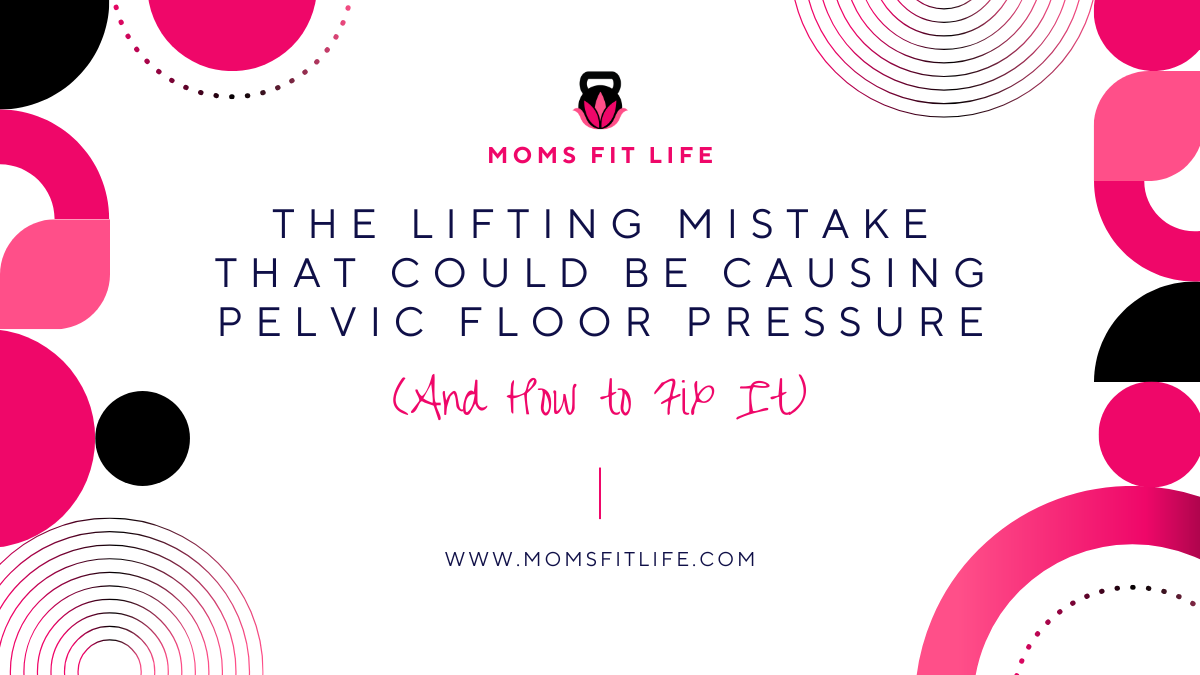The Lifting Mistake That Could Be Causing Pelvic Floor Pressure (And How to Fix It)

Learn why over-thrusting your hips during glute exercises can cause pain, pressure, and poor form—especially for postpartum women.
If you’re someone working on rebuilding strength after pregnancy—especially your glutes—you’ve probably been told to “squeeze your glutes at the top.”
And while activating your glutes is absolutely part of building strength, most women aren’t told that over-thrusting the hips at the top of a lift can actually create more issues than it fixes.

It’s a super common form mistake I see in postpartum clients and group fitness settings. Let’s talk about why it matters—especially when you’re working to support your pelvic floor and core.
What Is Over-Thrusting?
Over-thrusting is when, at the top of a squat, deadlift, or glute bridge, you drive your hips too far forward and over-squeeze your glutes.
It might feel like you’re getting “extra work in,” but it often leads to poor alignment and unnecessary pressure. And for postpartum women, those two things can show up as:
- Leaking during exercise
- Low back pain
- Pelvic heaviness or pressure
- Hip discomfort or pinching
Why Over-Thrusting Can Backfire:
1. Pushes the femurs forward
Too much forward thrusting can shove the thigh bones out of their ideal position in the hip socket. That can lead to hip tightness or pinching, and it can mess with your ability to properly activate your glutes.
2. Increases pressure on the pelvic floor
Forcefully locking out at the top of your lift can add downward pressure to your pelvic floor—something we don’t want when it’s already under strain after pregnancy.
3. Creates poor core alignment
Most women who over-thrust also extend through the lower back, flaring their ribs and losing that ribs-over-hips position that helps keep the core and pelvic floor supported. That misalignment can lead to doming (in cases of diastasis recti), low back tightness, or pressure through the midline.
What to Do Instead:
✅ Drive through your heels
✅ Engage your glutes without forcefully clenching
✅ Finish the lift in a tall, stacked position (ribs over hips)
✅ Avoid locking out your knees or throwing your hips forward
Filming yourself during exercises like squats, bridges, or deadlifts can help you catch this. If your hips are finishing way in front of your ankles, or your ribs are flared, you’re likely over-thrusting.

Want Help Fixing It?
This is exactly the kind of thing I look for in 1:1 coaching or virtual assessments. Whether you're leaking during workouts, feeling pressure, or just not confident your form is right—there's a way to make your body feel more supported during strength training.
💬 Email me at Jen@momsfitlife.com or DM me anytime.
We’ll walk through how you're moving, how to adjust it, and how to build strength that actually supports your life and your goals.
 Jen Landry
Jen Landry 